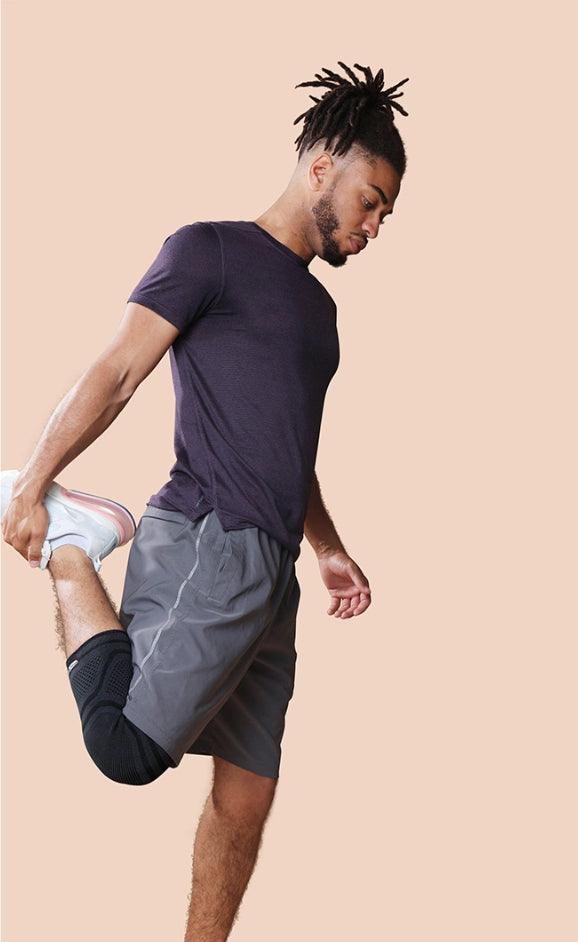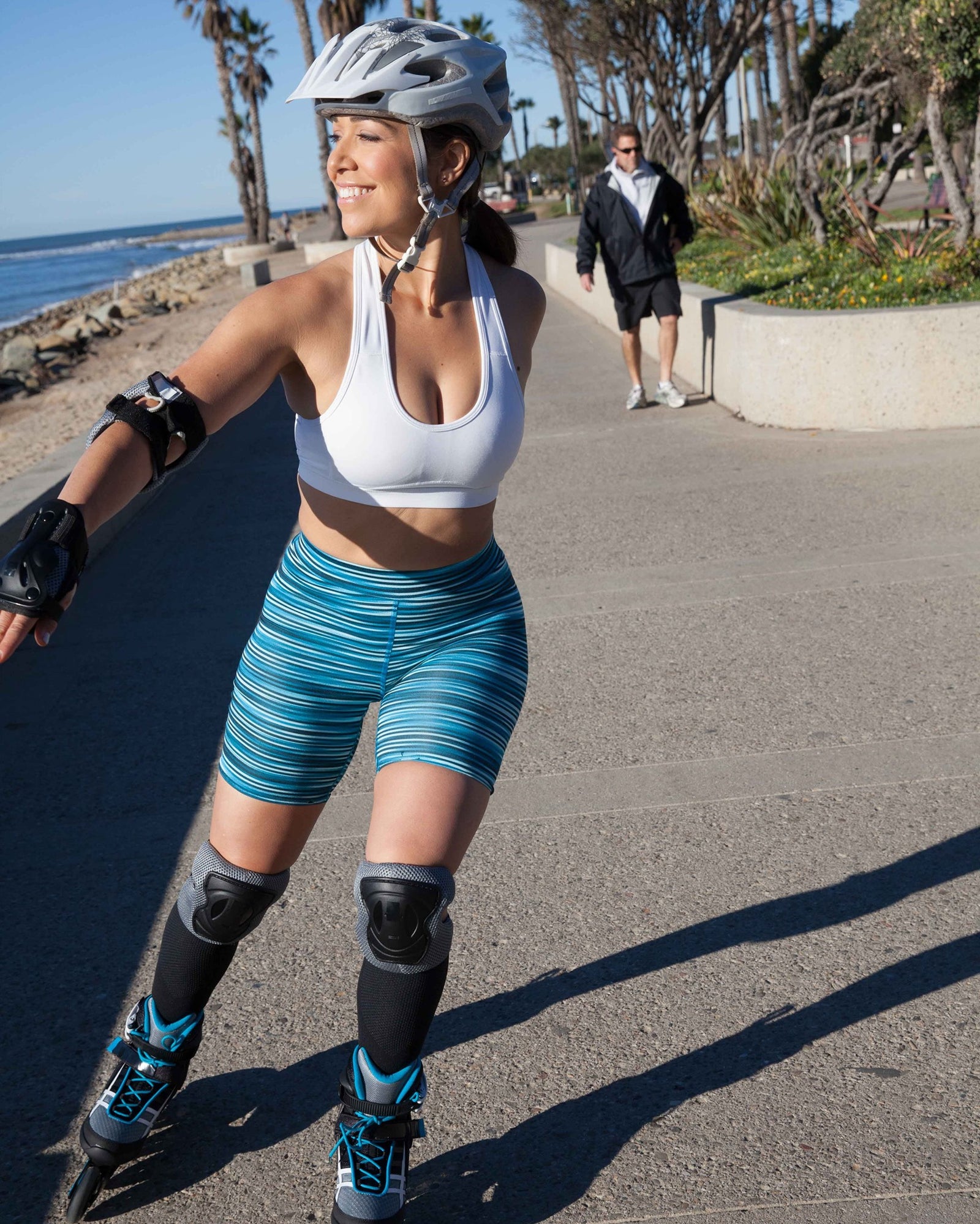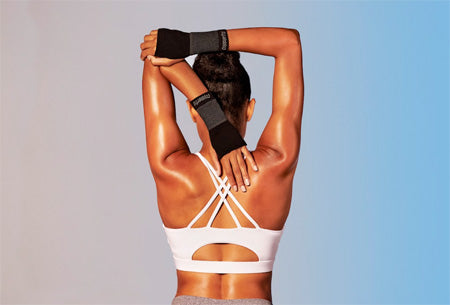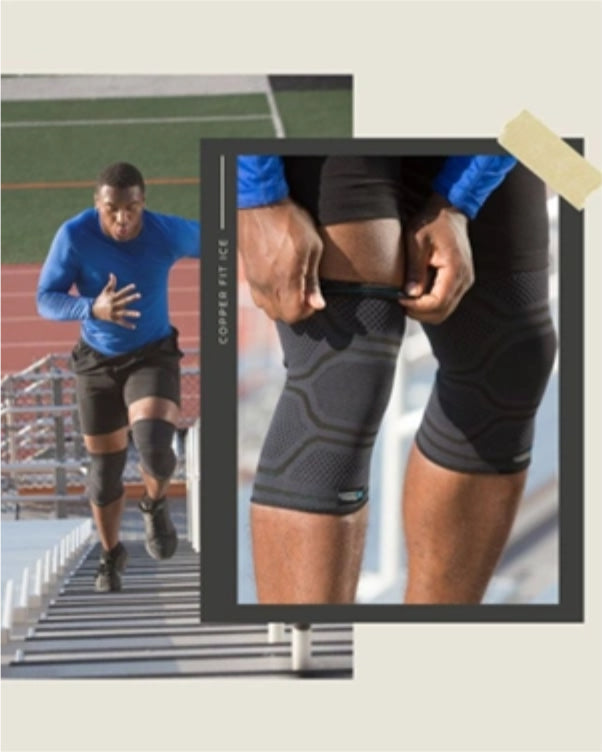
Key Takeaways
-
You don’t have to choose between total rest and full-intensity workouts. There’s a smart middle ground based on listening to your body’s cues.
-
Gentle, low-intensity movement can sometimes support circulation and help you feel more mobile, but only when your body feels ready for it.
-
As you ease back into activity, supportive habits and compression gear can help soothe tension and general muscle soreness without pushing your body too hard.
Feeling under the weather can leave you wondering if you should power through your workout or hit pause until you feel better. You work hard to stay consistent, so it’s understandable to worry that rest might interrupt your progress.
But the truth is that being intentional about listening to your body and taking it easy when needed can support your long-term mobility, comfort, and performance.
This guide will help you recognize what your body truly needs, understand the science behind movement, and choose the right level of activity to support your recovery.
Should You Work Out When Sick?
Your body is constantly giving you feedback about how much energy you have available. When you're feeling run-down, that feedback becomes even more important. Many people feel unsure whether symptoms like general tiredness, muscle tightness, or low motivation are signs to move lightly or rest entirely.
When your immune system becomes more active to fight off an illness or infection, your body naturally redirects energy to support that process. That’s why you may feel more fatigued, less coordinated, or simply less motivated. Your body is prioritizing essential processes so you can bounce back.
Low-level discomfort, such as mild congestion or daytime sluggishness, might not rule out all movement, but high fever, full-body heaviness, intense muscle soreness, or extreme fatigue are signals that your body needs rest. These sensations are helpful indicators that your energy is better spent on recovery than performance.
When Exercising Might Be Okay: the “Neck Rule”
Many experts use a simple rule of thumb to help determine whether gentle movement is appropriate: If your discomfort is limited to above the neck (mild congestion or a stuffy nose), it’s usually okay to try a workout, but keep the intensity low.
If the discomfort affects the whole body, such as noticeable fatigue, heavy limbs, chills, or nausea, it’s usually better to skip the workout. Some light stretching can help keep you feeling loose, while also not over-straining your body when what it really needs is rest.
When the body is directing more resources toward recovery, physical performance often drops. Heart rate may increase faster than normal during simple tasks. Muscles may feel tighter or more sensitive. Breathing during exercise may feel less efficient.
These are all cues that your body needs extra time before returning to regular training. By resting, you’re supporting the natural balance your body is already working hard to maintain.
When It Might Be Best To Skip Your Workout
Rest becomes essential when movement feels more demanding than usual. On days when even simple tasks create extra strain, pushing yourself can lead to longer periods of tension and slower recovery.
You may want to skip your workout if:
- Your whole body feels heavy, tight, or unusually sluggish
- Your breathing feels more difficult during light activity
- Your coordination or balance feels off
- Your normal warm-up feels challenging
- You feel significantly more tired than usual, even after sleep
When Light Movement May Actually Feel Good
If your body feels up for it, light movement can support circulation, joint mobility, and mental clarity. Research shows that low-intensity exercise can help promote blood flow, which supports the natural delivery of oxygen and nutrients to muscles. This can help reduce stiffness and help you feel more mobile without overloading your system.
Activities that often work well include:
- Slow, gentle stretching
- Light walking
- Easy mobility routines
- Low-effort, restorative yoga-inspired movements
These forms of movement don’t challenge your cardiovascular system the same way higher-intensity exercise does. Instead, they help you maintain a sense of rhythm and routine while respecting your body’s current energy level.
And, of course, remember to be mindful of others. If you think you may be contagious, it’s best to engage in these low-intensity movements either at home or outdoors rather than in shared indoor spaces like the gym.
Tips for Easing Back Into Your Workouts After Being Sick
Once you start feeling better, it can be tempting to jump right back into your full routine. But easing in gradually will help your muscles, joints, and cardiovascular system adjust without overloading them.
Some supportive guidelines:
-
Cut your normal training load by at least 30–50% at first. This gives your body room to adapt.
-
Shorten your sessions. Try 15–20 minutes before returning to longer workouts.
-
Focus on form, not intensity. Controlled, high-quality movement supports better recovery.
-
Build back steadily. Increase intensity only when your body responds well to lighter sessions.
- Prioritize hydration and rest. They’re essential for restoring energy levels.
How Compression Gear Can Support You Once You’re Moving Again
As you begin easing back into activity, your muscles may still carry some lingering tightness or general soreness. This is completely normal. After periods of low movement, muscles and joints often need a bit of extra support. Compression gear can be a helpful tool during this phase because it works with your body’s natural processes rather than pushing it harder.
Graduated compression can help support healthy circulation, which is useful when you’re reintroducing movement after downtime. Better circulation means your muscles receive the oxygen and nutrients they need as they work.
Smart Ways To Care for Your Body While Recovering
Recovery isn’t passive. It’s a mix of rest and intentional habits. When you’re regaining your energy, these behaviors can help support your body’s natural processes:
Stay hydrated
Adequate hydration supports circulation and helps your muscles function more comfortably. You may notice more dryness or fatigue when you’re not drinking enough, especially during recovery.
Prioritize sleep
Your body repairs itself most effectively during deep rest. Quality sleep helps replenish energy stores and supports overall wellness, so you can return to activity with more strength.
Use gentle mobility to maintain flexibility
Slow, controlled stretching and mobility work keep joints and muscles from feeling stiff. You don’t have to push hard, as small, consistent motions help you stay limber.
Choose nutrient-rich meals
Balanced meals with lean protein, whole foods, and colorful produce give your body the building blocks it needs to support recovery.
These habits help you feel more capable and mobile as you head back into your routine.
Building a Long-Term Approach to Fitness That Includes Rest
High-performing athletes don’t train at full speed every day. They build in structured rest to support long-term progress. This approach is just as beneficial for everyday adults who want to stay active, confident, and consistent.
Including rest days based on your body’s feedback can help prevent prolonged tension, unnecessary soreness, and burnout. When you recognize that recovery is its own form of training, you stay in tune with your body’s needs and maintain more sustainable momentum. It also helps you build confidence in knowing when to push and when to pull back, a skill that supports lifelong mobility and activity.
FAQ
Is it bad to work out while you're sick?
It depends on how your body feels. Mild, above-the-neck symptoms may allow for light movement, while full-body fatigue or heaviness usually means rest is the better choice. Listening to your energy level is the most reliable way to decide.
What workouts are safe to do when you’re not feeling well?
Gentle walking, slow stretching, and easy mobility work are often comfortable forms of movement. These activities support circulation and flexibility without overwhelming your system.
How long should I wait before returning to intense exercise?
Once your energy levels feel stable and light movement feels good, you can gradually increase intensity. Start slower than usual, check in with your body during each session, and progress only when movement feels comfortable.
The Bottom Line
At Copper Fit, we believe staying active shouldn’t feel stressful, especially when your body is working hard to recover. We encourage you to listen to your body, honor the signals it gives you, and choose movement that supports your long-term mobility and comfort.
Whether you’re resting, easing in with light workouts, or using compression gear for supportive recovery, we’re here to help you feel confident, capable, and ready to get moving again when the time is right.
Sources:
Immune System Function, Conditions & Disorders | Cleveland Clinic
Feeling sick but still want to exercise? Let the ‘neck rule’ be your guide | LA Times
Don’t overdo it, but light exercise can help with minor illness | CNN
Importance of Sleep for your Immune System | Cleveland Clinic





